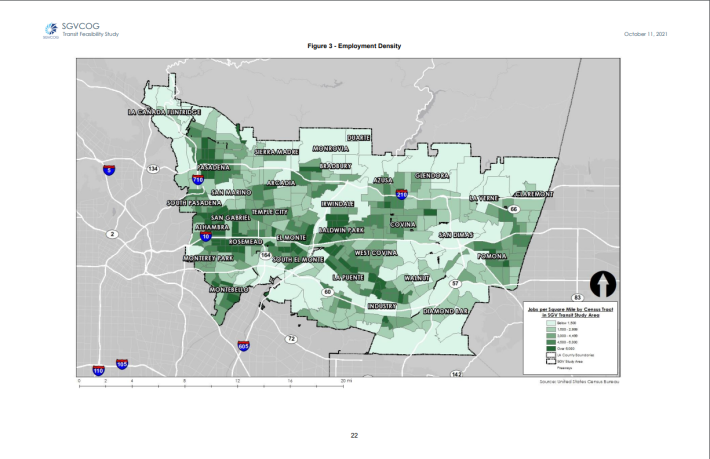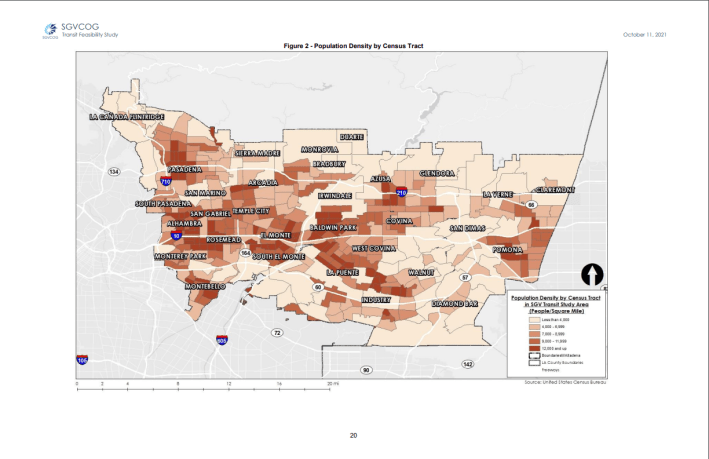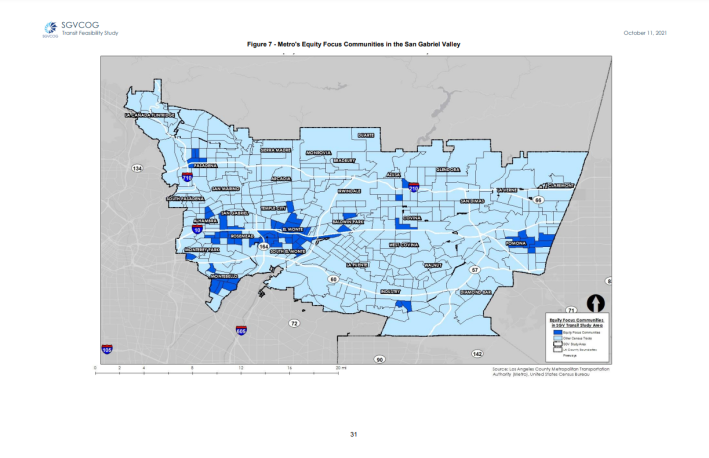Transit agencies nationwide have lost ridership during the pandemic. There were big losses in early 2020, and a struggle, still ongoing, to restore that lost ridership. Streetsblog checked in with local bus service providers in the San Gabriel Valley to see how they’ve rebounded in the last two-and-a-half years. We received data from Foothill Transit, Pasadena Transit, El Monte Transit, and Alhambra Community Transit. See SBLA spreadsheet for details.
The good news is all four of them kept service hours up. Foothill generally provided service within 90-100 percent of its 2019 average monthly service hours, and the three smaller agencies often exceeded 100 percent of 2019’s service hours. By comparison, Metro cut service by 20 percent in 2020, and to date has not fully restored it, due to several factors including a bus operator shortage.
The bad news is that overall, the four agencies’ combined weekday ridership has only recovered about 66 percent of their 2019 average as of June ‘22. Pasadena seems to be making the best comeback with about 82,000 riders in June – 74 percent of its 2019 monthly average of some 111,000 passengers. Foothill is not too far behind that, though appears to be struggling under the weight of its broad service area (22 cities, with connections to downtown L.A., and the edges of Orange and San Bernardino Counties). In the month of June ‘22, Foothill saw over 22,000 weekday riders compared to the over 39,000 monthly average in 2019, a 43 percent drop in ridership.
In September of 2021, Foothill Transit’s Chief Executive Officer Doran Barnes told the San Gabriel Valley Council of Governments on its Connect SGV podcast that there’s a reason for keeping service hours up even as ridership numbers lag behind.
“The logical thing to do would be [...] cutting back the services because fewer people are riding." said Barnes. "But given the role that we play in terms of helping people reach critical destinations [...] we've actually been maintaining above 95 percent of our service levels, even though ridership is down [...] We literally put out marketing materials that said, ‘We're here for you if it's an essential trip [...] and we want you to stay home if it's not because that's the best thing for our community.’”
Alhambra Community Transit’s ridership from June ‘22 is also sagging, at 52 percent of the 2019 monthly average – 15,809 versus 30,481.
El Monte Transit is doing somewhat better: 14,119 weekday riders in June. That’s about 61 percent of 2019’s 23,118 average. Perhaps El Monte’s higher number can be attributed to the presence of the El Monte Metro Bus Station and the city’s Metrolink Station.
It’s worth noting that the three smaller providers serve three of the cities with the highest number of zero car households, per the SGV Council of Governments’ Transit Feasibility Study. There’s significant overlap for these cities with other maps in the study that look at Employment Density and Population Density – and they are some of Metro’s Equity Focus Communities for the San Gabriel Valley.




Equity Focus Communities are defined as places to prioritize transit investment because they are the “most heavily impacted by gaps in inequity throughout the county.” The Transit Feasibility Study goes on to describe them as, “geographic areas within L.A. County that have the following socioeconomic characteristics: more than 40 percent of households are low-income and either 80 percent of households are non-white or 10 percent have no access to a vehicle [...] EFCs are communities that have experienced historical disinvestments, reduced access to opportunity and housing, and policy decisions that have resulted in environmental justice disparities.”

Generally speaking, the Equity Focus Communities are concentrated in the Southern SGV, and lie within the Transit Feasibility Study’s “Focus Area for New Services.” Cross referencing Foothill Transit’s service area map with the EFC’s and the Focus Area for New Services may suggest that increasing service in La Puente and the unincorporated communities surrounding City of Industry – the Southern SGV’s job hub – might be one strategy to help restore lost ridership.








